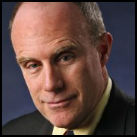Columnist, Jay Mathews: "Outdated SAT needs to be retired"

By Jay Mathews
Published: September 26 2012
Several years ago, I tried to persuade this newspaper to stop giving so much prominence to the annual results from America's most feared test, the SAT. I said we were exaggerating its importance and aggravating the anxiety it caused families.
My editors ignored me. They are still doing so. On Tuesday, Lyndsey Layton and Emma Brown's fine story on the 2012 SAT results led the paper. I realize I was wrong to try to keep SAT news from our readers, but it remains true that the elderly test, age 86, is not doing anybody much good.
Selective colleges use the SAT only to decide which applications should be quickly consigned to the dumpster. (They feel guilty about it and will occasionally keep a low score in the maybe pile if the football coach begs them.) They always have more applicants with scores above 2000 (out of 2400) than they have room for. SAT distinctions at that level have no meaning, so admissions offices find other ways to cull the herd.
Long-term SAT trends may illuminate what a terrible job we are doing teaching reading and writing, but we know that. Fewer colleges every year require applicants to take the SAT or the ACT. Bob Schaeffer, public education director for FairTest: The National Center for Fair & Open Testing, says "875 accredited, bachelor-degree granting colleges and universities do not require all or many applicants to submit test scores before making admissions decisions."
The SAT may still be the scariest test in the land, but it is no longer the most popular. The ACT edged it out this year for the first time, with 1,666,017 members of the class of 2012 taking the ACT compared with 1,664,479 for the SAT. The ACT, unlike the SAT, has some science questions and inspires less angst in East Coast and West Coast high schools so long terrorized by the SAT.
Studies say the SAT and ACT do not predict first-year college success - the reason colleges give for requiring them - as well as high school grade point averages do. GPA also predicts college graduation rates better. The effort students put into learning during the school year, as assessed by their teachers, turns out to mean more than a four-hour test graded mostly by machines.
I admit this is personal. I took the SAT only once, in 1962. Toward the end of the exam, I suffered the worst panic attack of my life. I was more frightened than I ever was while serving my country in Vietnam or running from tanks while reporting for The Washington Post the crackdown on demonstrators in Beijing.
I still think the worry and heartache inspired by the SAT outweigh the learning and college planning it is supposed to encourage. The SAT does not conclude a deep and engaging course, as college entrance tests in other countries often do. Most high schools don't teach SAT. That job is left to a huge test prep industry. This creates jobs, including many for my Washington Post Co. colleagues at Kaplan Inc., but we could find better things for them to do.
Why not replace the SAT and ACT with Advanced Placement, International Baccalaureate or Advanced International Certificate of Education tests? Those exams culminate college-level courses and encourage critical thinking. They require that students write many of their answers in detail.
Students who have taken those courses and exams will tell you they were good preparation for college. Unlike the SAT and ACT, they are modeled after college exams and graded by human beings. We can always share our old SAT horror stories, but let's try something different next year.
